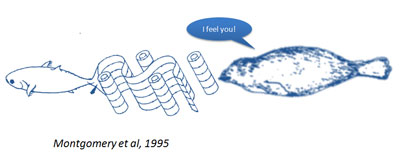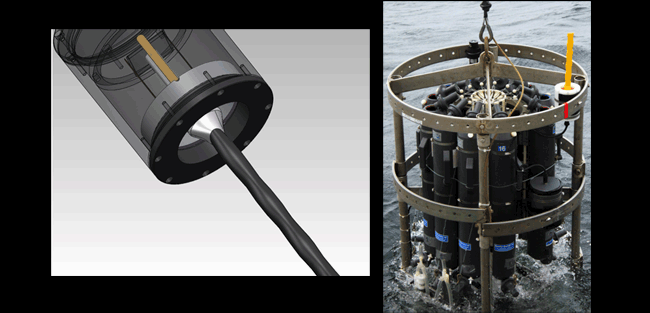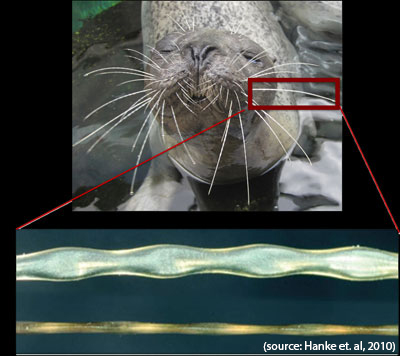Seal Whiskers as Sensors
MOTIVATION:
A major challenge for autonomous underwater vehicles (AUVs) is being able to intelligently assess their surroundings. Here we look to the harbor seal for inspiration, as they are able to use their whiskers to track prey via the hydrodynamic signature of the wake. A whisker-inspired sensor would enable underwater robots to “feel” the flow.
The harbor seal is unique in that its whisker morphology reduces flow-induced vibrations, suggesting that these seals are able to sense oncoming flow characteristics with reduced background noise.

INTRODUCTION:
Harbor seals can detect the wake of a fish up to 35 seconds after it has passed. Biological experiments show that they are able to do this using their whiskers, even when auditory and visual cues have been blocked [1]. This is unexpected, since a bluff body protruding into a flow experiences large vibrations from the oncoming flow, which would make it a noisy sensor.
Interestingly, the harbor seal whisker geometry is unique- it is undulatory and asymmetric.
It was conjectured [2] that this shape accomplishes a specific purpose: it suppresses vortex-induced vibrations (VIV). As the seal swims forward, the whiskers do not vibrate significantly, allowing the seal to pick up the signal of the upstream target with reduced background noise.
Our goal is to 1) study if and how this shape reduces VIV and 2) to develop a flow sensor capable of detecting hydrodynamic features, such as the vortex street left in a fish wake.
BIO-INSPIRED SENSOR:
The features we are discovering about how the whisker interacts with the flow are being engineered into a new sensor, which will enable underwater robots (AUVs) to intelligently assess their surroundings.

A first prototype sensor has been designed to work by the whisker pushing on “bend sensors” inside a waterproof housing. This instrument was tested on the R/V Wecoma during the NSF Chief Scientist Training Cruise where it was deployed on a CTD and used to measure local currents.
